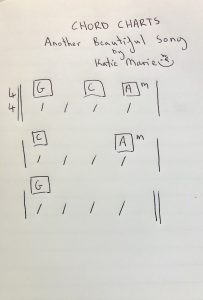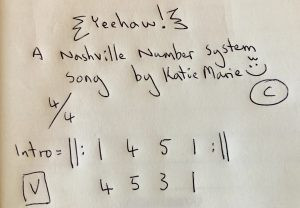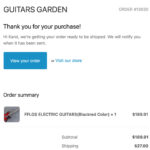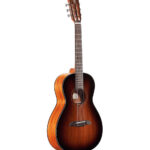Being prepared for a recording session is crucial, and for guitarists, a clear and concise chord chart is your best friend. Over my years working in diverse studio environments, I’ve seen everything from meticulously detailed scores to… well, nothing at all. Let me tell you, sessions run much smoother, and more creatively, when everyone has access to accurate and easy-to-read charts. Investing time in creating a good Basic Guitar Chord Chart before you step into the studio is an investment in making better music, faster. This guide will walk you through creating effective charts, focusing on the essentials for any guitarist, especially beginners.
Understanding Song Structure: Your Chart’s Foundation
Before diving into chord symbols and rhythms, understanding song structure is paramount. Think of it as the roadmap for your music. Using abbreviations keeps your charts clean and easily digestible, especially under studio pressure:
- V: Verse – The storytelling section of the song.
- C or CH: Chorus – The main, often repeated, section, usually the emotional core of the song.
- B or BR: Bridge – A contrasting section that provides a change of pace or perspective, often adding depth before returning to the chorus.
- Pre-C: Pre-Chorus – A section that builds anticipation and leads into the chorus.
- Outro: The ending section of the song.
- Intro: The beginning section of the song.
- Inst: Instrumental – Sections without vocals, focusing on instrumental melodies or solos.
For example, a common song structure might look like: Intro – V1 – Pre-C – C – V2 – Pre-C – C – BR – C – Outro. Clearly laying this out at the top of your basic guitar chord chart provides immediate context for everyone involved.
Essential Types of Basic Guitar Chord Charts
Now, let’s explore different types of basic guitar chord charts, ranging from the simplest to more detailed, all perfect for guitarists of any level.
1. Lyrics with Guitar Chords: Simplicity First
 Example of lyrics with guitar chords chart
Example of lyrics with guitar chords chart
This is often the most approachable type of basic guitar chord chart, especially for beginners. It’s straightforward: write out the lyrics and place the chord names directly above the words where the chord changes occur.
Pros:
- Easy to Read: Anyone can quickly grasp the chord progression and follow along with the song.
- Beginner-Friendly: Requires minimal music theory knowledge.
- Quick to Create: Fastest method for jotting down song ideas or basic structures.
Cons:
- Rhythmically Ambiguous: Doesn’t specify how long each chord should be played within a measure.
- Less Precise: Can be challenging for complex rhythmic patterns or intricate song arrangements.
Best for: Initial songwriting stages, very simple song structures, rehearsals where everyone is familiar with the song, or for guitarists just starting to learn chord charts.
2. Standard Guitar Chord Charts: Adding Rhythm
 Example of a standard guitar chord chart
Example of a standard guitar chord chart
Stepping up in detail, standard guitar chord charts introduce rhythmic notation beneath the chord names. This is crucial for conveying the timing and duration of each chord within a bar (or measure). Typically, a 4/4 time signature is assumed unless otherwise specified.
Understanding Rhythm Markings:
- Beats: In 4/4 time, each bar has four beats. Rhythm markings indicate how many beats each chord receives.
- Dashes or Lines: Lines or dashes under a chord often represent individual beats. For instance, in the example, you see lines under the chords indicating the rhythmic duration.
- Spacing: Spacing between chords can also visually suggest rhythmic values.
Example Breakdown (referring to the image):
If you look at the “Chord Charts” image, the first bar shows:
- G with two lines underneath – indicating it lasts for two beats.
- C with one line underneath – indicating it lasts for one beat.
- Am with one line underneath – indicating it lasts for one beat.
This provides much more rhythmic clarity than lyrics with chords alone.
Pros:
- Rhythmic Clarity: Provides essential rhythmic information for musicians to play accurately together.
- Relatively Simple: Still easy to read and doesn’t require advanced music notation knowledge.
- Versatile: Works well for a wide range of musical styles.
Cons:
- Less Detail than Full Scores: Doesn’t include melodic lines, specific voicings, or other nuanced musical information.
- Requires Basic Rhythm Understanding: Players need to understand basic rhythmic notation to interpret the chart correctly.
Best for: Studio sessions, band rehearsals, gigs, and situations where rhythmic accuracy is important but a full score is unnecessary. Excellent for guitarists who want to move beyond basic charts.
3. Nashville Number System: Flexibility and Transposition
 Example of Nashville Number System chart
Example of Nashville Number System chart
The Nashville Number System is a brilliant and streamlined method, particularly valuable in studio settings where arrangements might evolve or keys might need to change on the fly. It uses numbers instead of chord names to represent chords within a key.
How it Works (Major Key Example):
In a major key, each number corresponds to a degree of the major scale and implies a chord quality:
- 1: Major chord (Tonic)
- 2: Minor chord (Supertonic)
- 3: Minor chord (Mediant)
- 4: Major chord (Subdominant)
- 5: Major chord (Dominant)
- 6: Minor chord (Submediant)
- 7: Diminished chord (Leading Tone)
Example in C Major:
The C major scale is C-D-E-F-G-A-B. Therefore:
- 1 = C Major
- 2 = D Minor
- 3 = E Minor
- 4 = F Major
- 5 = G Major
- 6 = A Minor
- 7 = B Diminished
A chord progression written in numbers like [ 1 5 6 4 ] in the key of C major translates to: C – G – Am – F.
Key Transposition – The Power of Numbers:
The beauty of the Nashville Number System is its easy transposition. If you need to change the key to G major, the same number chart [ 1 5 6 4 ] now becomes: G – D – Em – C. The relationships between the chords remain the same, only the root key changes.
Pros:
- Key Transposition: Effortlessly change keys without rewriting the chart.
- Simplicity and Speed: Numbers are quicker to write and read than full chord names.
- Studio Versatility: Ideal for fluid studio environments and songwriting sessions.
Cons:
- Requires Number System Knowledge: Musicians need to be familiar with the Nashville Number System to use it effectively.
- Less Direct for Beginners: Might be less intuitive for guitarists initially learning chord charts.
Best for: Professional studio sessions, songwriting collaborations, situations requiring key changes, and musicians comfortable with number-based systems.
4. Full Music Score: Maximum Detail
While less common for basic guitar chord charts in popular music studio sessions focusing on rhythm section instruments, a full music score represents the most comprehensive form of musical notation. It includes melody lines, detailed rhythms, harmonies, and often specific instrumental parts written out on staves.
Pros:
- Complete Information: Conveys every musical detail precisely.
- Universally Understood (by trained musicians): Standard music notation is a globally recognized language among musicians.
- Ideal for Complex Arrangements: Best for intricate orchestrations and compositions.
Cons:
- Time-Consuming to Create: Writing full scores is significantly more time-intensive.
- Requires Music Reading Proficiency: Many contemporary musicians, particularly outside of classical music, may not be fluent in reading full scores.
- Often Overkill for Basic Charts: Unnecessary detail for simple chord progressions or rhythm guitar parts in many studio contexts.
Best for: Classical music recording, film scoring, complex orchestral arrangements, situations where absolute precision and detailed notation are essential, and when working with musicians who are proficient in reading full scores.
Final Thoughts: Choosing the Right Chart for You
Creating effective basic guitar chord charts is about balancing detail and clarity. For most studio sessions, especially for guitarists focusing on rhythm and chords, lyrics with chords, standard chord charts with rhythm markings, or the Nashville Number System offer the best combination of simplicity and useful information.
Experiment with these methods, consider the skill level of the musicians you’re working with, and choose the chart type that best serves the music and the session. Clear communication through well-prepared basic guitar chord charts will always lead to a more productive and musically rewarding studio experience.


